Under Reconstruction
Nerima Art Museum in northwest Tokyo celebrates 35 years with Re Construction, a show that invites four contemporary artists to reinterpret works from its collection. These artists are Manika Nagare, Satoru Aoyama, Motohiro Tomii, and Maki Ohkojima. Each artist is given a room with its own theme and a work or works from the collection from which to draw inspiration. In one pre-event open to the public, visitors took surveys about their associations between color and images of Japan. Artists Motohiro Tomii and Maki Ohkojima also gave demonstrations of how they create their works.
Running through September 27, this exhibition demonstrates how works from different time periods can have successful dialogues with each other and how collections can recast themselves in fresh lights. Visitors who subscribe to the Tokyo Art Beat app will receive ¥100 admission discounts with MuPon museum coupons.
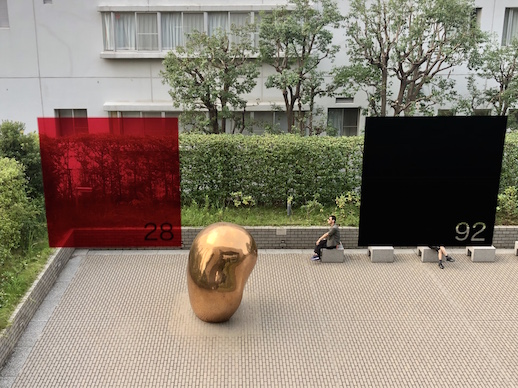
Collection
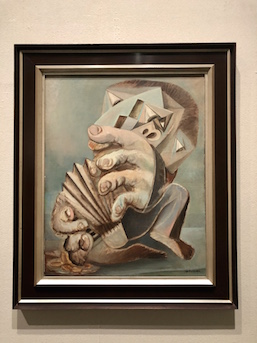
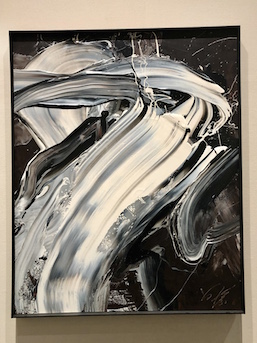
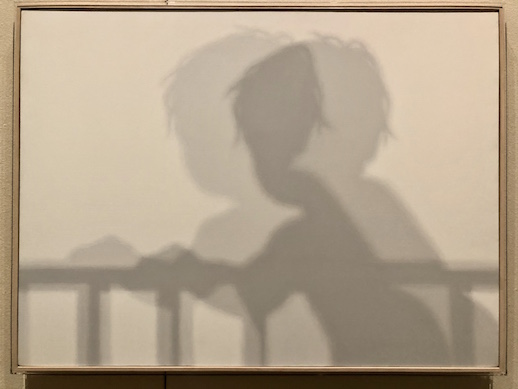
The Nerima Art Museum collection contains some 6,700 works. Its focus is on modern Japanese oil paintings while also branching into contemporary art. Notable artists represented at this show include postwar Surrealist Masao Tsuruoka (1907–1979), Gutai leader Kazuo Shiraga (1924–2008), and Hi-Red Center avant-gardist Jiro Takamatsu (1936–1998). Tsuruoka’s “Beggar” (1950) speaks to human realities in the chaotic aftermath of WWII. Portraying a medieval monk’s pilgrimage to Nachi Falls, Shiraga’s “The Monk Mongaku – Traveling to the Waterfall” (1972) is a fine example of one of the artist’s paintings done with his feet. In his ‘Silhouette’ series started in 1964, Takamatsu explored ideas of existence and illusion through images of shadows.
Manika Nagare “Color”
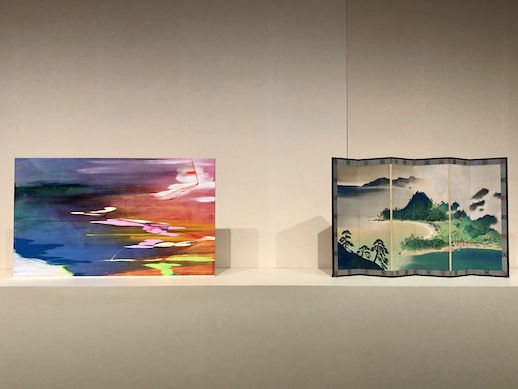
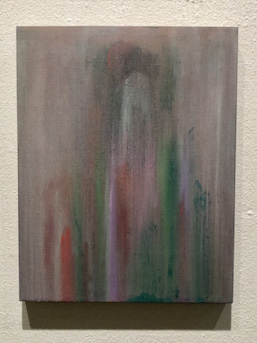
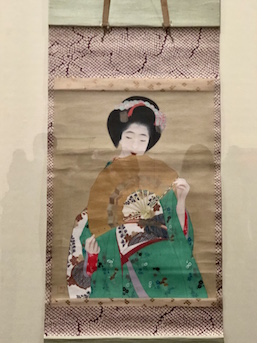
Manika Nagare is known for the vivid colors of her abstract paintings. Her “Deserted Seaside Village in May” (2020) is paired with Eikyu Matsuoka’s “Satsuki Matsuhamamura” (1928), and her “Traces of Colors: Shizuno Matsuoka ‘Maiko'” (2020) is shown with Shizuno Matsuoka’s “Maiko” from the Taisho era (1912–1926). While the color schemes differ in the first sets of paintings, Nagare’s take on “Maiko” seems to be a melting or blurring of Matsuoka’s apprentice geisha in similar hues. Nagare explains, “Images of shores are strongly rooted in ideas about death for Japanese people, suggesting the end of this life and the crossing over to another…For ‘Traces of Color,’ I sought out the original artist’s experience in carefully selecting the colors for ‘Maiko.'”
Satoru Aoyama “Media”
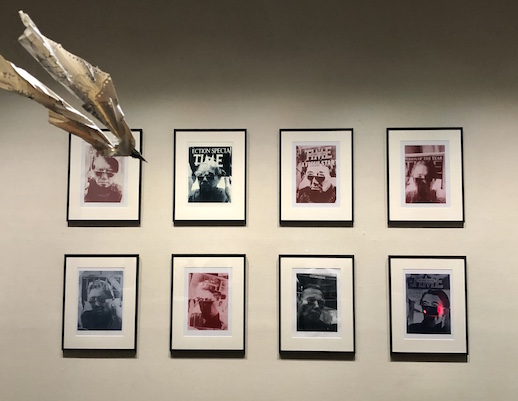
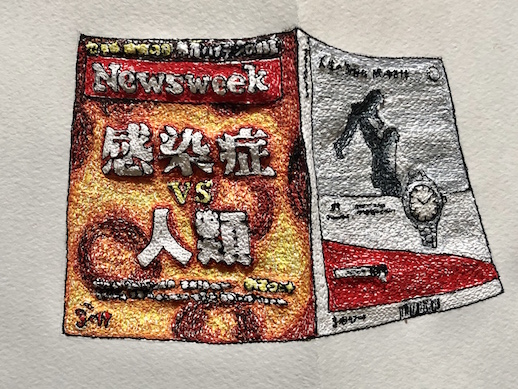
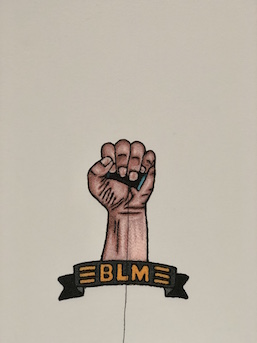
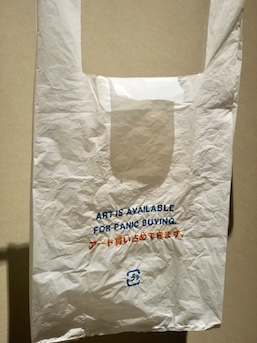
Embroidery artist Satoru Aoyama’s works respond to Kwak Duck-Jun’s ‘Presidential’ series with their own takes on contemporary times. While Kwak’s silkscreens blended images of himself with portraits of U.S. presidents on mock Time Magazine covers, Aoyama presents a menagerie of multimedia items that allude to current issues. Hanging from the ceiling are paper planes representing Japan F-35 fighter jets and the Japan Air Self-Defence Force’s Blue Impulse fleet. “I think it boils down to Marshall McLuhan’s line about how the the media is the message,” Aoyama says. “If you replace the word ‘media’ with ‘sewing machine,’ we find it speaks in unique ways to issues of machinery, labor, and gender. I want to continue exploring and reinterpreting these terms.”
Motohiro Tomii “Space”
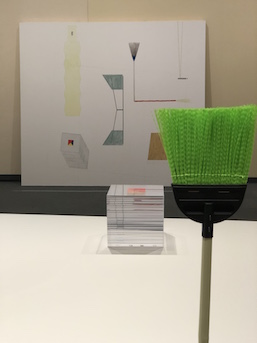
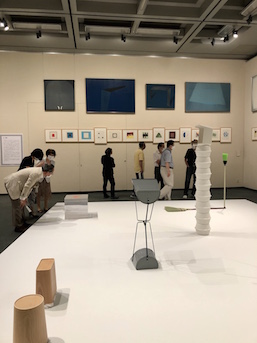
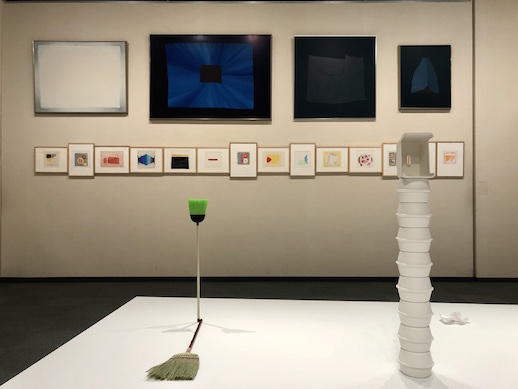
Motohiro Tomii’s sculptural installations of readymades are arranged at the center of the room while oil paintings by Gaku Onogi (1924-1976) hang on the walls surrounding them. Although in different media, both bodies of work take an interest in the appearance of objects in space; Tomii’s out-of-context brooms and bath stools seem nearly as abstracted as the shapes in Onogi’s paintings. “Adding and subtracting things changes an environment,” Tomii comments. “Some might say that sculpting is taking a material and giving it shape, but it me, it’s more a medium of thinking about space and giving attention to space.”
Maki Ohkojima “Body”
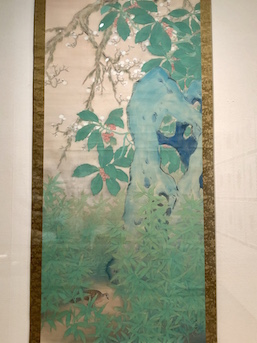
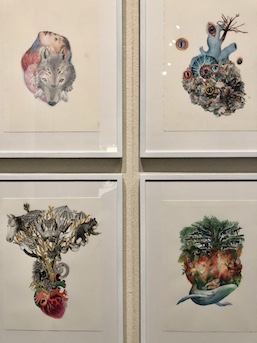
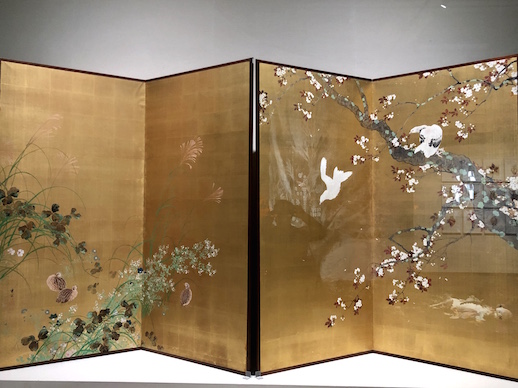
Japanese-style Nihonga paintings from the 1920s have inspired a series of paintings, sculptures, and projections by Maki Ohkojima. These body-themed pieces draw on mythology to build their own universe of motifs and narratives from the natural world. Ohkojima remarks, “I think of the body as moving rabble…It’s a symbiosis of diverse, cooperating parts. We don’t usually see this cooperation, so we tend to forget about it. These works are an attempt to visualize this typically unseen aspect of the body.”
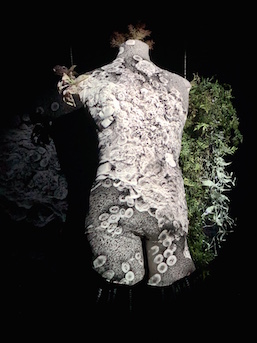
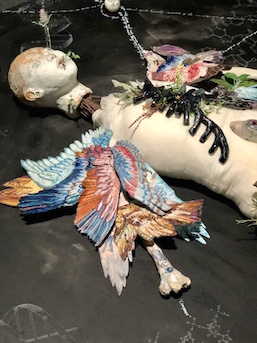
Nerima Art Museum has done an innovative thing in asking these four well-selected artists to bring new perspectives to its collection. The collection itself is strong, but––like any––benefits from more viewing angles. In most rooms the new pieces tend to overshadow the older ones in number and impact, but close attention reveals a rich lineage of Japanese art. The new works alone are worth seeing for their dynamism, diversity, and freshness. Let’s hope more museums with robust collections attempt similar exhibitions.


